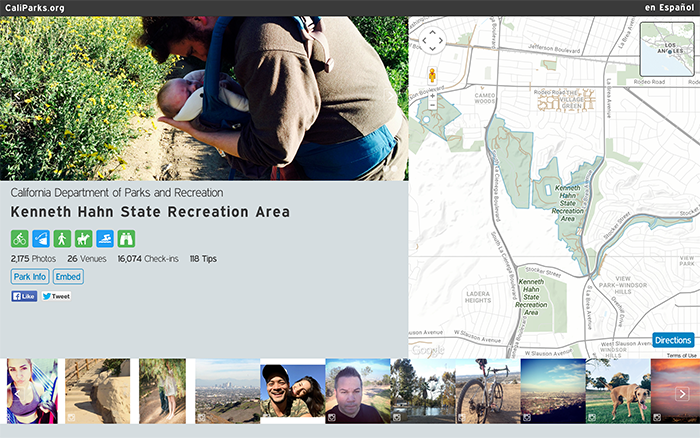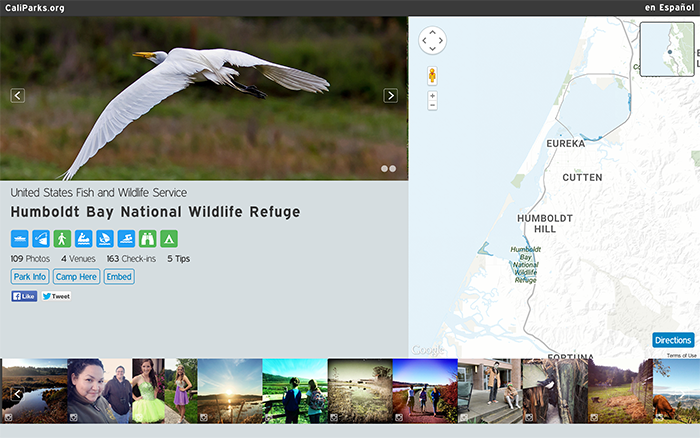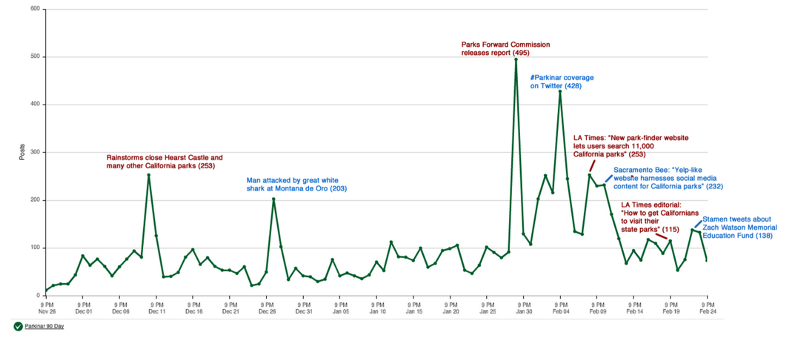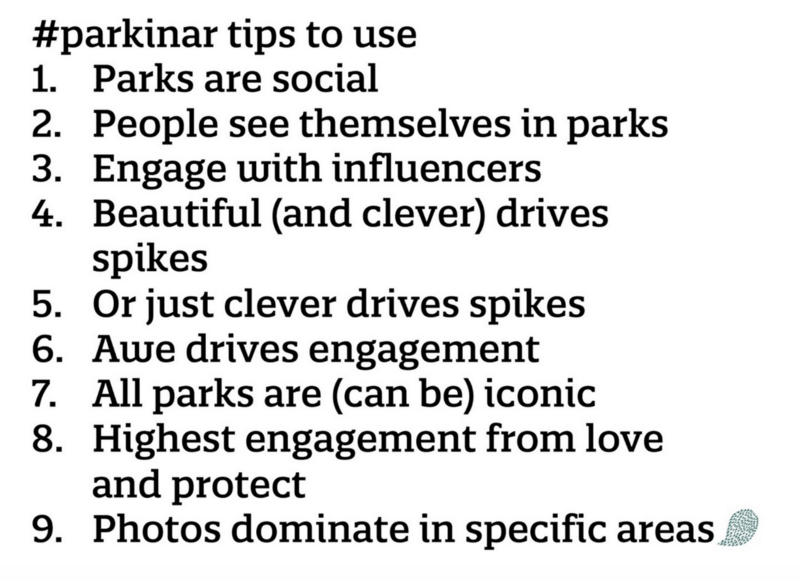There’s a story in the American nature-loving tradition that people go to the outdoors in part to get away from other people. Some people might even say that’s the main reason to go outside.
We’re ever more certain, however, that in truth parks are social, people live their lives in them, and bringing together support for parks means embracing that with open arms.
That’s what we’ve been trying to do with the concept, design, and launch of CaliParks.org, our web application that brings together curated park location and activity data with completely uncurated image feeds from Instagram and Flickr, capturing images posted by anyone within the boundaries of California’s nearly 12,000 public parks.


We’re thrilled with stories like this one from New America Media — soon to be translated into Spanish, Chinese, Korean, and Vietnamese! There you’ll meet young, diverse urban dwellers ready to visit and support parks, and also leaders like José Gonzalez of Latino Outdoors and Rue Mapp of Outdoor Afro, who are leading the way in showing the parks world that diverse communities already use and support parks and are ready to do more, given the right context.
And that context is all about the conversations we collectively have about, in, and for parks. What stories do we tell? Who do we ask to share their experiences?
As many people as possible!
Right after we launched CaliParks.org last month, we worked with our friends at Upwell to hold a “Parkinar” about social media in parks — a conversation about conversations in parks.
The response was amazing: More than 80 people participated directly in the Parkinar, including a range of influencers from large agencies like the National Park Service, community groups like Riverside’s Save Our Chinatown Committee, and blogs like Outdoorsy Mamaand Modernhiker.com.
Upwell’s research on the conversational impact showed that a single virtual event actually increased parks conversation more than LA Times:

That’s nice for CaliParks.org, but it’s even better for parks as a whole: When we open up the conversation, the stories start flowing.
Let’s keep that going!

We’re working on improving CaliParks.org, so send us your feedback. There’s a feedback link on the bottom of every page on the site — and we do read those submissions!
And let us know how we can help you expand the conversation. Here are some ideas:
- CaliParks.org has what we call featured “story blocks” prominently on the home page. Right now we’re featuring “Explore State Parks.” Yeah! Do you have a favorite set of parks that speak to you and the community you’re part of? Send us a list of ten or twenty parks and a link to a Creative Commons photo on Flickr, and we’ll feature your favorite parks (and your group in the story block!), and then you can share the list with your community. (And if you need help finding an image, we can do that too.)
- Embed maps from CaliParks.org along with activities and social media from your favorite parks in your blog or website. Just find your favorite parks, hit the “Embed” button, and copy the code into your site (like this)!
- Take control of the way your favorite parks appear on CaliParks.org, and on social media. Post photos from your favorite parks to Instagram and Flickr and we’ll harvest them within a day to show on CaliParks.org. Just be sure you turn on location services so that your geolocation gets picked up.
- Keep talking about parks on social media! Use the hashtag #caliparks so we can all share the conversation.
And keep in touch! Thanks!
